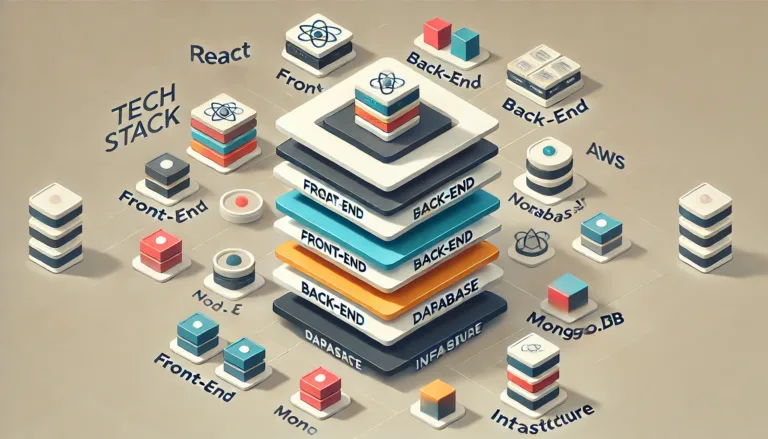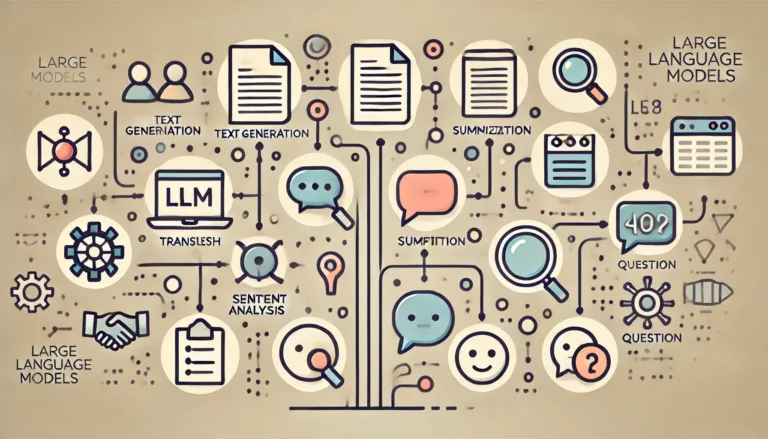Introduction
What makes a programming language hard to learn? Is it the convoluted syntax, the arcane concepts, or simply the lack of guidance available for beginners? With over 700 programming languages in existence, it’s no wonder that some are known for pushing even seasoned programmers to their limits. While many developers might pick up Python or JavaScript as their first foray into coding, others might dare to tackle the more notorious languages that require not just skill, but resilience and persistence.
Not all programming languages are created equal. Some are intentionally designed to be challenging, pushing the boundaries of conventional programming. Others, while immensely powerful, demand a deeper understanding of computer architecture or abstract paradigms that make their mastery akin to learning a new dialect of an alien tongue. From the esoteric to the complex, understanding what makes a programming language “difficult” can shed light on which languages are best suited for curious minds seeking a true test of their capabilities.
In this blog, we’ll explore which programming languages are considered the hardest to learn and why. We’ll break down the factors contributing to their complexity, provide detailed examples, and help you decide whether you want to take up the challenge or steer clear of these formidable coding languages.

Understanding the Complexity: Factors Contributing to Difficulty
A. Complex Syntax
One of the key factors that can make a programming language difficult to grasp is its syntax. While some languages, like Python, are designed to read almost like English, others seem purposefully obtuse. Complex syntax can lead to confusion, increased likelihood of errors, and ultimately, frustration. For example, languages like C++ and Haskell often involve a myriad of symbols, strict indentation rules, and nested structures that require meticulous attention to detail. This means a single misplaced bracket or semicolon can cause a cascade of errors, making debugging a daunting task even for experienced developers.
B. Steep Learning Curve
Another characteristic shared by many challenging programming languages is a steep learning curve. These languages typically require substantial time and effort to reach proficiency. In languages like Prolog or Assembly, there’s little room for intuitive guesswork; understanding the core principles is crucial from the very beginning. While simpler languages allow learners to quickly write basic programs and build confidence, difficult languages often involve a prolonged period of grappling with foundational concepts before anything meaningful can be achieved. This can be discouraging for beginners and even seasoned coders branching into new paradigms.
C. Advanced Concepts
Lastly, some programming languages are hard to learn due to the advanced concepts they require. For instance, C++ demands a deep understanding of memory management, while Haskell introduces programmers to purely functional paradigms with constructs like monads and lazy evaluation. Similarly, Prolog requires a shift in mindset from procedural thinking to logical reasoning, and mastering Assembly means directly manipulating hardware registers and memory addresses. These advanced topics not only require time and effort to comprehend but often necessitate a solid grasp of computer science fundamentals, making these languages unsuitable for casual learners.

Deep Dive: The Hardest Programming Languages
1. Malbolge
Malbolge is a programming language intentionally designed to be nearly impossible to use. Created by Ben Olmstead in 1998, Malbolge is categorized as an esoteric language, a type of programming language created more as an intellectual challenge or joke than for practical use. Its syntax is designed to be confusing and self-altering, making it a true test for those brave enough to try and write even the simplest program.
Key Challenges
The primary difficulty of Malbolge stems from its self-altering code structure, which means that the commands in the program mutate as the code runs. This dynamic nature, combined with a completely unintuitive syntax, makes it exceptionally hard to predict program behavior. To add to the complexity, the language operates using an obscure ternary system, making it incompatible with traditional logic patterns. As a result, writing, debugging, or understanding Malbolge code is considered an almost insurmountable challenge.
Practical Use Cases
Malbolge is rarely, if ever, used for practical programming. Instead, it is primarily explored by programming enthusiasts and researchers looking to test the limits of their understanding or for academic amusement. Its convoluted nature makes it a playground for theoretical experiments rather than functional programming.
2. Brainfuck
Brainfuck is a minimalist esoteric language created by Urban Müller in 1993. It consists of only eight commands and operates on a simple memory model, making it deceptively small but incredibly challenging to use for meaningful programming. Its minimalist design aims to force programmers to build complex logic from very basic building blocks, turning code into a mental puzzle.
Key Challenges
Despite its minimalistic syntax, Brainfuck is notoriously difficult due to its lack of readability and cryptic structure. Each command performs a very specific operation, and the language doesn’t include standard features like variable names or control structures that are common in other programming languages. Writing functional programs in Brainfuck often requires tracking and manipulating memory pointers in convoluted ways, making even basic tasks an intricate exercise in precision.
Practical Use Cases
Brainfuck is primarily used as a mental exercise for experienced programmers. While it is impractical for real-world applications, some coders tackle it as a way to push their problem-solving skills to the limit or for the sheer novelty of completing complex algorithms in such a limited language.
3. C++
C++ is a powerful, high-performance programming language created by Bjarne Stroustrup in 1985. It is widely used for systems programming, game development, and performance-critical applications. While not intentionally difficult like some esoteric languages, C++ is known for its steep learning curve due to its versatility and complexity.
Key Challenges
The complexity of C++ arises from its intricate syntax and the wide range of features it offers, such as low-level memory manipulation, pointers, and advanced object-oriented programming concepts. Mastering C++ requires a deep understanding of memory management and how the computer handles different data types. Additionally, debugging C++ can be a daunting task, as memory leaks, segmentation faults, and undefined behaviors are common pitfalls for newcomers and experienced programmers alike.
Practical Use Cases
Despite its challenges, C++ remains one of the most widely used programming languages in the world. It is the language of choice for developing high-performance applications, such as game engines, real-time systems, and software that require direct hardware manipulation. Its performance and control over system resources make it invaluable for projects where efficiency and speed are critical.
You can overcome challanges of C++ by reading this article!
4. Haskell
Haskell is a purely functional programming language that places a strong emphasis on immutability, type safety, and high-level abstractions. Originally designed in the late 1980s, Haskell is both expressive and elegant, making it a favorite among academics and developers exploring functional programming paradigms.
Key Challenges
Haskell’s steep learning curve comes from its unique syntax and functional approach, which are drastically different from imperative programming languages like C++ or Python. Concepts such as monads, lazy evaluation, and strong typing can be difficult to grasp, even for experienced programmers. Furthermore, Haskell’s focus on immutability means that traditional ways of solving problems using variables and loops are replaced by more abstract constructs, requiring a shift in problem-solving mindset.
Practical Use Cases
Haskell is widely used in academia for teaching and research due to its emphasis on mathematical precision and theoretical foundations. In the industry, it finds niche use in projects that require high reliability, such as financial systems, and in scenarios where complex logic needs to be expressed clearly and concisely.
5. Prolog
Prolog, short for Programming in Logic, is a logic-based language designed in the early 1970s. It is primarily used for applications in artificial intelligence and computational linguistics. Unlike imperative or functional languages, Prolog requires programmers to define relationships and rules, making it a unique tool for solving logical queries.
Key Challenges
Prolog’s biggest challenge is its unconventional approach to problem-solving. Instead of specifying a sequence of steps, programmers define facts and rules, and the language uses logical inference to derive solutions. This paradigm shift requires a new way of thinking, which can be overwhelming for those accustomed to traditional procedural or object-oriented languages. Additionally, writing efficient Prolog code demands a deep understanding of recursion and backtracking algorithms.
Practical Use Cases
Prolog is well-suited for AI-related tasks, such as natural language processing, expert systems, and rule-based decision-making. It is frequently used in fields like linguistics, cognitive science, and AI research where logical pattern matching and symbolic computation are essential.
6. Assembly Language
Assembly language is a low-level programming language that allows developers to write code that directly interacts with a machine’s hardware. It is one of the closest languages to actual machine code, providing precise control over the system’s operations. Although it is not a single language, Assembly varies by processor architecture, making it challenging to learn and use effectively.
Key Challenges
The main difficulty in learning Assembly lies in its low-level nature. Programmers need to understand the inner workings of the CPU, memory hierarchy, and how data is represented at the hardware level. Writing Assembly involves managing registers, memory addresses, and performing bitwise operations, which can be incredibly error-prone. Additionally, debugging Assembly code is notoriously difficult, as a single incorrect instruction can crash an entire system.
Practical Use Cases
Assembly is primarily used in embedded systems, firmware development, and scenarios that require direct hardware manipulation, such as device drivers. Its precision and control over hardware make it indispensable in performance-critical applications, where even a minor optimization can yield significant improvements.
Why Are These Languages Considered Difficult?
Programming languages like Malbolge, Brainfuck, C++, Haskell, Prolog, and Assembly are considered exceptionally difficult for a variety of reasons, but they all share a few common traits that set them apart from more accessible languages like Python or JavaScript.
Breakdown of Shared Traits
- Complex Syntax: Many of these languages have a syntax that is either highly intricate (like C++ and Haskell) or intentionally confusing (like Malbolge and Brainfuck). Complex syntax increases the cognitive load required to write and understand code, leading to a higher likelihood of errors and greater difficulty in debugging.
- Steep Learning Curve: Languages like Prolog and Haskell require a significant amount of time and dedication to master. This steep learning curve can be discouraging because it takes longer to see tangible results compared to more beginner-friendly languages. In addition, the lack of immediate gratification can be a barrier for newcomers, making these languages feel less intuitive.
- Advanced Concepts: C++’s pointers and memory management, Haskell’s monads and functional constructs, and Prolog’s logical inference require a deep understanding of abstract concepts. These topics demand that learners build a strong theoretical foundation before they can even start writing functional code, making the early stages of learning especially challenging.
- Limited Learning Resources and Community Support: While popular languages like Python and JavaScript benefit from large communities and extensive documentation, esoteric languages like Malbolge and Brainfuck have very limited resources. Even more established languages like Haskell and Prolog often suffer from a lack of comprehensive learning material, which can make overcoming initial hurdles more difficult.
Explanation of Paradigms and How They Impact the Learning Curve
Programming paradigms play a crucial role in defining how a language is structured and how programmers approach problem-solving. Different paradigms require different ways of thinking, and switching between them can be a major source of difficulty.
- Imperative vs. Declarative Paradigms: Languages like C++ follow an imperative style, where programmers define step-by-step instructions for the computer to follow. In contrast, Prolog is a declarative language where programmers specify what should happen rather than how it should be achieved. This paradigm shift is one of the main reasons Prolog is challenging, as it forces programmers to think in terms of relationships and logical rules instead of traditional loops and conditionals.
- Functional Programming: Haskell’s functional nature emphasizes immutability, pure functions, and higher-order functions, which are foreign concepts to developers accustomed to imperative programming. The lack of side-effects, reliance on recursion instead of loops, and the use of advanced concepts like monads all contribute to Haskell’s steep learning curve.
- Low-Level Control: Assembly language, on the other hand, requires direct interaction with the hardware, where programmers must manage memory, registers, and CPU instructions manually. This level of control is absent in higher-level languages, making Assembly a daunting prospect for those unfamiliar with computer architecture.
Comparisons to More Accessible Languages
In contrast, languages like Python and JavaScript are considered beginner-friendly because they prioritize readability, simplicity, and community support:
- Readable and Intuitive Syntax: Python’s syntax is designed to be almost conversational, with strict indentation and clear semantics that mirror natural language. Similarly, JavaScript’s syntax is straightforward, making it accessible for those new to programming.
- Lower Learning Curve: Both Python and JavaScript allow newcomers to build simple projects quickly, providing instant feedback and a sense of progress. This immediate gratification motivates learners to continue exploring more advanced topics.
- High-Level Abstractions and Error Handling: These languages abstract away complex details like memory management and hardware manipulation, making it easier for programmers to focus on solving problems rather than wrestling with the language itself.
As a result, while languages like Python and JavaScript are well-suited for beginners and rapid prototyping, the hardest languages to learn demand a deep understanding of paradigms, concepts, and low-level system operations—often making them the domain of specialists, researchers, or programmers looking to challenge themselves.
Considerations for Aspiring Programmers
A. Choosing a Language Based on Your Goals
The choice of which programming language to learn shouldn’t be based solely on difficulty. Instead, consider your career goals and the types of projects you want to work on. For example:
- Game Development or High-Performance Software: Languages like C++ are invaluable due to their efficiency and control over hardware. While the learning curve is steep, the rewards are substantial for those interested in fields like game development, systems programming, or performance-critical applications.
- Artificial Intelligence and Logical Problem Solving: Prolog may be challenging to learn, but it’s well-suited for specialized fields like AI, natural language processing, and computational linguistics. For aspiring AI researchers or those drawn to solving complex logical problems, learning Prolog can open up unique opportunities.
- Academic Research and Theoretical Programming: Haskell is ideal for those interested in formal methods, functional programming, and theoretical computer science. If you’re looking to build a strong academic foundation, Haskell’s focus on purity and mathematical precision can be highly rewarding.
Understanding your career aspirations will help you align the difficulty of a language with its long-term benefits, making the learning process feel more purposeful.
B. Balancing Challenge with Interest
When tackling a difficult programming language, it’s crucial to find a balance between challenge and genuine interest. Learning a challenging language like Assembly or Brainfuck for purely academic reasons can quickly become frustrating without a passion for low-level computing or puzzle-solving.
- Start with Languages That Offer Immediate Rewards: Begin with languages like Python or JavaScript, which offer immediate feedback and community support. This builds your confidence before you dive into more complex languages.
- Take On Challenges That Align with Your Passions: If you have a fascination with computer architecture, Assembly will feel more engaging despite its difficulty. Similarly, if you love the beauty of abstract mathematical constructs, Haskell might be more satisfying to master compared to a more straightforward language.
Ultimately, choosing a language that aligns with your interests can turn a daunting challenge into an enjoyable pursuit, making it easier to stay motivated through the steep learning curves.
C. Importance of Learning Resources
The availability of learning resources can significantly impact how quickly you grasp a new language. For esoteric languages like Malbolge or Brainfuck, community support is virtually nonexistent, making self-study a lonely endeavor. Conversely, mainstream languages like Python and JavaScript benefit from robust ecosystems, with countless tutorials, online courses, forums, and coding communities.
- Seek Out Strong Community Support: A strong community can help you overcome challenges through collaborative problem-solving and shared knowledge. Languages like C++ have extensive documentation, active forums, and mentorship opportunities that can help bridge the gap when tackling complex concepts.
- Choose Languages with Quality Learning Material: Make sure that your chosen language has comprehensive learning resources, such as books, tutorials, and coding exercises, that suit your learning style. Some languages, like Haskell, have excellent resources like Learn You a Haskell for Great Good!, which make complex topics more approachable.
In summary, support and community are key when tackling difficult languages. They can turn a frustrating experience into a rewarding one, providing guidance, encouragement, and a sense of camaraderie.
Conclusion
The world of programming is vast, and the difficulty of mastering different languages can vary greatly depending on their design, paradigms, and application areas. From the mind-bending constructs of Malbolge and Brainfuck to the complex memory management and syntax of C++, the hardest programming languages require dedication, problem-solving skills, and a willingness to step outside the conventional boundaries of coding. Even more conventional yet challenging languages like Haskell, Prolog, and Assembly present unique paradigms and concepts that can overwhelm newcomers but greatly reward those who persist.
For aspiring programmers, choosing a difficult language to learn can be both daunting and exciting. The key is to align your learning with your goals and interests—whether it’s building high-performance applications with C++, diving into the logic-based problem-solving of Prolog, or mastering the low-level hardware manipulation of Assembly.
Ultimately, the “hardest” language is subjective and varies based on your experience level and objectives. What is most challenging for one person may feel intuitive for another. So, rather than being intimidated, view each language as an opportunity to expand your thinking and problem-solving abilities, taking your programming skills to new heights.
Citations/References
- Unimedia Tech
- Glowlogix
- Lokajit Tikayatray
- Guvi Blog
- LinkedIn Pulse
- Reddit LearnProgramming
- TechReviewer Blog
FAQ
1. What is the hardest programming language to learn?
The hardest language varies based on personal experience and learning style, but Malbolge is often cited as the hardest due to its intentionally confusing design and self-altering code structure. Brainfuck and Assembly are also known for their extreme complexity.
2. Is C++ harder than Python?
Yes, C++ is generally considered much harder than Python. C++ has a complex syntax and requires a deeper understanding of concepts like memory management, pointers, and object-oriented programming, while Python is designed for simplicity and readability.
3. Which programming language should I learn first?
For beginners, Python and JavaScript are excellent choices due to their readability, extensive community support, and ease of use. Once you’re comfortable with these, you can explore more challenging languages like C++ or Haskell based on your goals.
4. Why should I learn a difficult programming language?
Learning a difficult programming language can significantly enhance your problem-solving skills and deepen your understanding of computer science concepts. It can also open up specialized career opportunities in fields like AI, game development, and low-level systems programming.
5. Can I learn a hard language without prior coding experience?
It’s possible, but starting with an easier language like Python first will help build a strong foundation. Once you’re familiar with basic programming principles, transitioning to harder languages like Haskell or C++ will be more manageable.









